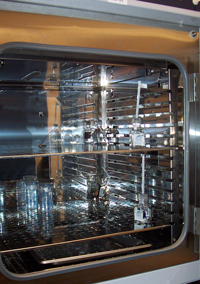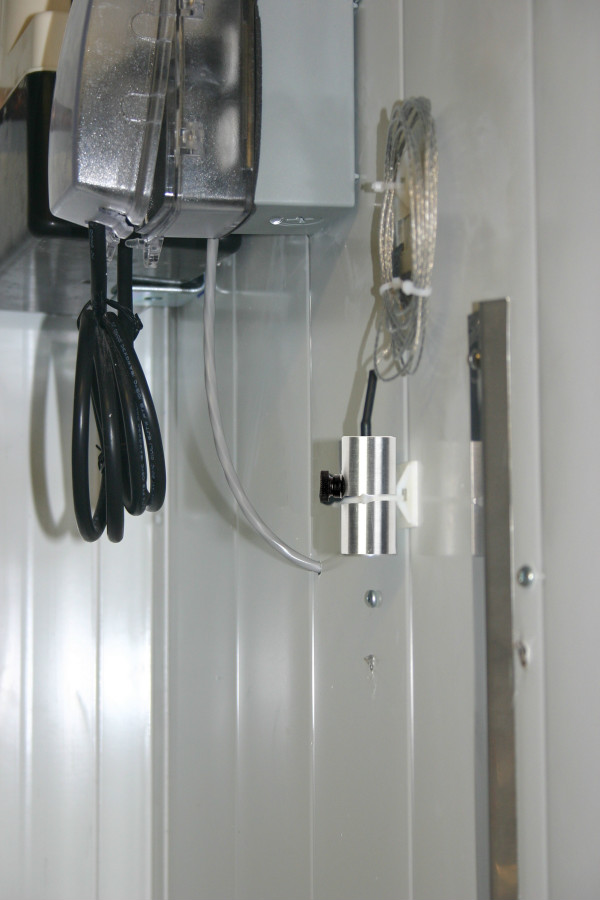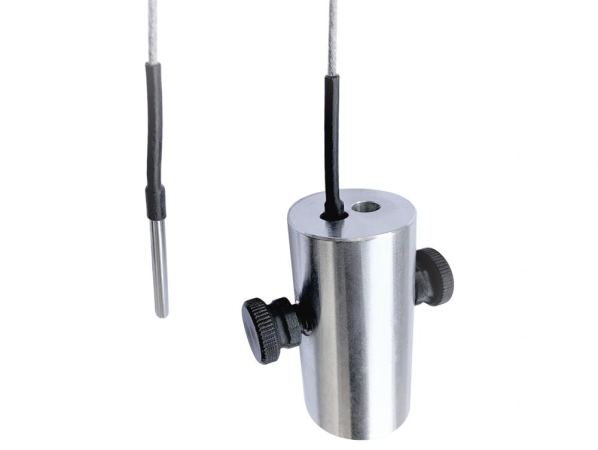Thermal Damping of Temperature Probes: Where, When, & Why
We often receive questions from customers on the use of thermal damping devices on temperature probes.
In this week’s blog, we have a more in-depth discussion on where and when to use a buffering device, and why.
Paul writes:
For mapping studies, I usually advise against damping the measurements. Almost every controlled environment we map provides a stable environment for the stored item by bathing it in temperature-controlled air. The temperature of the stored item is dependent on the temperature of the air. The air temperature will fluctuate based on normal control cycles and the stored product temperature will fluctuate accordingly. The product temperature will fluctuate less, as it will always have a higher specific heat than the air, and the product will experience temperature fluctuations that are "damped" relative to the air temperatures. Products generally have a higher thermal mass than air. The actual air temperature represents the worst-case scenario. Product temperature (which we can think of as a damped signal) will always show less fluctuation than air. As validation professionals we always want to address the worst-case scenario, so measuring the undamped air temperature is the right choice; both easy to defend, and easier to do.
 Are there any cases where we would dampen a probe when mapping? This comes up as a question when the environments fail to perform appropriately when we measure air temperature. This is often a symptom of 1) failing equipment, or 2) equipment that is not suitable to the task. In these cases adopting a practice of mapping, a damped air signal is just hiding the fundamental problems that either the equipment is failing or the equipment is not suitable.
Are there any cases where we would dampen a probe when mapping? This comes up as a question when the environments fail to perform appropriately when we measure air temperature. This is often a symptom of 1) failing equipment, or 2) equipment that is not suitable to the task. In these cases adopting a practice of mapping, a damped air signal is just hiding the fundamental problems that either the equipment is failing or the equipment is not suitable.
However, when a validation expert says a damped air temperature just hides bad equipment, this rarely means that your customer will magically obtain a budget to buy new equipment. More likely: the customer will move forward with their plans to map with faulty equipment, and expect you (the validation expert) to find an appropriate solution. This often happens when validation is put at the end of the project, rather than the beginning.
Whatever the reason, you are left with a challenge. My recommendation is to map bare sensors in air, undamped signals, to see if the environment can meet the acceptance criteria when mapping air temperature as the worst-case scenario. Do this even if you expect that it will fail. Once it fails, then you have a rationale to support using a damped signal, and you will know how much damping might be required based on your original study data.
Let's assume we are now at that point: you mapped in air and the data did not met acceptance criteria, so you need to map again. Examine what will be stored in the environment. You don't want your artificial damping of the sensors to exceed the natural damping that the smallest items stored in the environment will experience. For instance, if the smallest item stored in the environment is 50ml vials of liquid product, then we would want to use a significantly smaller volume of placebo product (say 20ml vials of glycol) in which to place our sensors. I think you get the idea… our study will be compromised (read "meaningless") if the product stored is more sensitive to temperature than the sensors we are using to map the environment. And, when we are done with our mapping, procedural controls will be needed for that environment to make sure that no products smaller than 50ml are ever stored in the area.
So you can damp you air temperature signal. However, it is my opinion that this often just covers up failing or inappropriate equipment. It will be subject to questions under audit. And it will require ongoing procedural controls for the mapped environment.
Now you may ask: Does this logic apply to constant monitoring after the mapping has been completed and units are in use? Yes, and no. Monitoring is a different story. Mapping is validation to show a process performs reliably using challenge scenarios such as the worst-case examples. Monitoring is quality control to ensure the process is running correctly. But wait! There are some variables to consider…
With monitoring, you are ideally selecting your sensor positions, and often alarm limits, on information derived from your mapping study. For this process to have some continuity to it, we would expect that the monitoring process would follow our mapping process. To say it another way – if we started damping our signal to monitor, would we have a reasonable expectation that our data would be comparable? We would be monitoring the process in a way that wasn't used in the mapping study and then expecting to be able to make comparisons with the data.
But this is often what people do. They just stick a monitoring probe in the chamber, damp the signal with glycol or some solution, and don’t give it another thought. In my experience, most auditors won’t say anything about it. You have validated your chamber by mapping, you are monitoring with a validated monitoring system, and even if the damped monitoring data isn’t comparable to your mapping, or proven to be equivalent to your typical load, at least it will capture catastrophic failures in your chamber – power loss, compressor failure, door left open, etc.
You can probably tell that I prefer monitoring in air temperature. I don’t mind the problems that it brings because I don’t think of them as problems. The disadvantages of monitoring air temperature are that the temperatures change faster and respond more easily to environmental perturbations such as leaving the chamber door open or adding the product of a different temperature.
However, these perturbations are things that represent a chamber that is not be properly managed. With well-trained personnel, doors aren’t left or held open. With proper handling procedures, new stock is conditioned at the appropriate temperatures before it is placed in our chamber. However, with a damped monitoring signal – these“problems” (which are usually indicators of poor processes, ineffective training, and failing equipment) go away. I personally think they shouldn't be hidden and like that the undamped signal of air temperature in your chamber can tell you about more than the performance of your refrigerator, it can tell you about the performance of your department. Furthermore, with an advanced monitoring system, like our viewLinc CMS, you can use alarm delays to achieve many of the same effects as a damped signal without losing the data sensitivity. This is a better use of technology to give honest data and set up smart monitoring.
So what are the major disadvantages and advantages of a damped signal? On the positive side: damped signals offer simplicity in operation. You can install and forget. On the negative side: you risk a mess from spilled damping fluid in high traffic areas. And you risk a mess in the logic of your monitoring process because the data is not truly representative of what the product is experiencing. You will lose the ability to evaluate deviations unless you know that your damped signal is still more sensitive than your product. One possible solution would be to do a study to ensure that your damped monitoring signal is approximating your product.
We have seen some industries successfully damp monitoring signals, such as eye/cornea banks, where guidance specifies that the sensor be placed in 20ml of Optisol, as this is the recommended way to store a cornea. However, eye banks deal only in corneas, and all corneas are conservatively very similar.
In the field, we've seen that most people damp the monitoring signal and don't worry about the consequences. I am not recommending this, but it is quite common and therefore unlikely to hurt you in an audit (maybe).
If you have any experience to share on where and when to use thermal buffers, including what you use as a damping device, please contact me or my colleague, Piritta Maunu.
Survey on Single-Point Calibration
Last week we blogged on How to Perform a Single-Point Calibration with a video. The response to that video was great! Thank you to all who read the blog.



Add new comment